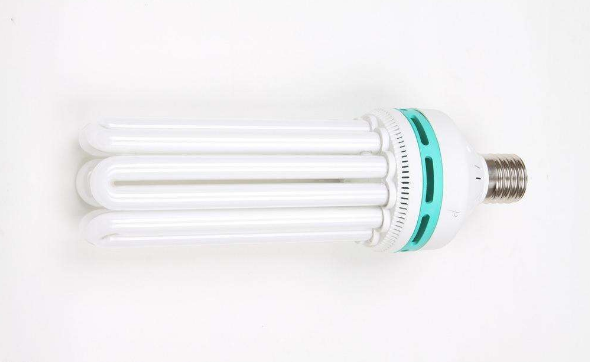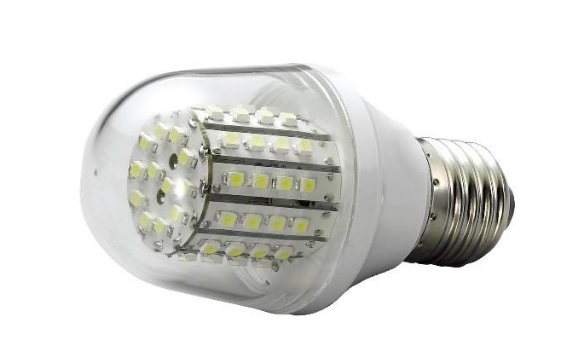Guide: In our daily lives, LED lamps have become essential lighting tools. Energy-saving lamps, while once popular, are now being gradually replaced by more advanced LED technology. But what makes LED energy-saving lamps so beneficial? They not only provide bright illumination but also offer convenience and efficiency in our nighttime routines. When shopping for lighting solutions, it's important to compare energy-saving lamps with LED lights. What exactly is the difference between these two types of lighting? Many people think they are similar, as both emit light. However, there are significant differences between energy-saving lamps and LED lamps. Let’s explore the benefits of LED energy-saving lamps together!

LED Energy Saving Lamp
What Are the Benefits of LED Energy-Saving Lamps?
1. High Luminous Efficiency
Compared to traditional lighting sources, LED lamps have a much higher luminous efficiency. Incandescent bulbs produce 12–24 lumens per watt, halogen lamps about 15–30 lumens per watt, and fluorescent lamps around 50–70 lumens per watt. Sodium lamps can reach up to 90–140 lumens per watt, but most of their power is lost as heat. In contrast, LED lamps can achieve 50–200 lumens per watt, with a narrow spectrum and high color purity, allowing them to emit direct colored light without the need for filters.
2. Low Power Consumption
Each LED consumes only 0.03–0.06 watts, operates on DC voltage (1.5–3.5 volts), and has a current of 15–18 mA, enabling fast response and high-frequency operation. At the same brightness level, LEDs use just one-tenth the power of incandescent bulbs and half that of fluorescent lamps. In Japan, it's estimated that replacing half of incandescent and fluorescent lamps with LEDs could save up to 6 billion liters of crude oil annually. For example, a fluorescent lamp may consume over 40 watts, while an LED uses only 8 watts.
3. Long Lifespan
Traditional lamps like incandescent and fluorescent bulbs suffer from filament degradation, heat loss, and reduced light output over time. LED lamps, on the other hand, are compact, lightweight, and sealed in epoxy resin, making them resistant to shocks and vibrations. Their average lifespan can reach up to 100,000 hours, meaning they can last 5–10 years under normal use. This significantly reduces maintenance costs and the need for frequent replacements.
4. Safe and Reliable
LEDs produce very little heat, making them a "cold light source" that can be safely touched. They allow precise control over light direction, color, and brightness, reducing glare. Additionally, they do not contain harmful substances like mercury or sodium, making them safer for both users and the environment.
5. Environmentally Friendly
As solid-state lighting, LEDs are impact-resistant, non-breakable, and recyclable. They help reduce emissions of harmful gases such as sulfur dioxide, nitrogen oxides, and carbon dioxide. This makes them a "green lighting solution." There are three main technologies for producing white LEDs: using red, green, and blue LEDs mixed in specific ratios; using blue LEDs with phosphor to create white light; and using ultraviolet LEDs to excite multiple phosphors for a full spectrum of white light.

LED Energy Saving Lamp
6. More Energy Efficient
Energy savings are the primary reason many people choose LED lighting. While LEDs may cost more upfront than traditional bulbs, the energy savings typically offset the initial investment within a year. After that, you can enjoy several times the energy savings over the next 4–9 years. This makes LEDs a smart long-term choice for both residential and commercial use.
What Is the Difference Between Energy-Saving Lamps and LED Lamps?
Energy-saving lamps, often referred to as CFLs (Compact Fluorescent Lamps), are designed to be more energy-efficient than traditional incandescent bulbs. LED lamps, on the other hand, use Light Emitting Diodes as their light source and are considered a newer, more advanced alternative to CFLs. In recent years, LED lighting has gained popularity due to its superior performance and longer lifespan.
CFLs generally have a luminous efficacy of 50–65 lumens per watt, while LEDs currently range from 100–130 lumens per watt. However, when considering the overall lamp efficiency, LEDs typically fall between 65–80 lumens per watt. The price of LEDs is still higher than that of CFLs, with CFLs costing about 2–4 times less for the same light output. While the price difference is notable, the power consumption and lifespan differences make LEDs a more cost-effective option in the long run.
The nominal lifespan of a CFL is 6,000–12,000 hours, while LEDs can last 10,000–20,000 hours. Although this difference may seem small, it translates into fewer replacements and lower maintenance costs over time. It’s worth noting that the quality of LED products varies, especially in some domestic markets. Some manufacturers may prioritize cost over performance, leading to potential issues with light quality and eye comfort. That said, the best LED products—especially those exported to Europe or North America—are known for their reliability and performance, even among well-known brands like Philips and Osram.
TFT LCD Monitor,TFT LCD,TFT Display
ESEN HK LIMITED , https://www.esenlcd.com